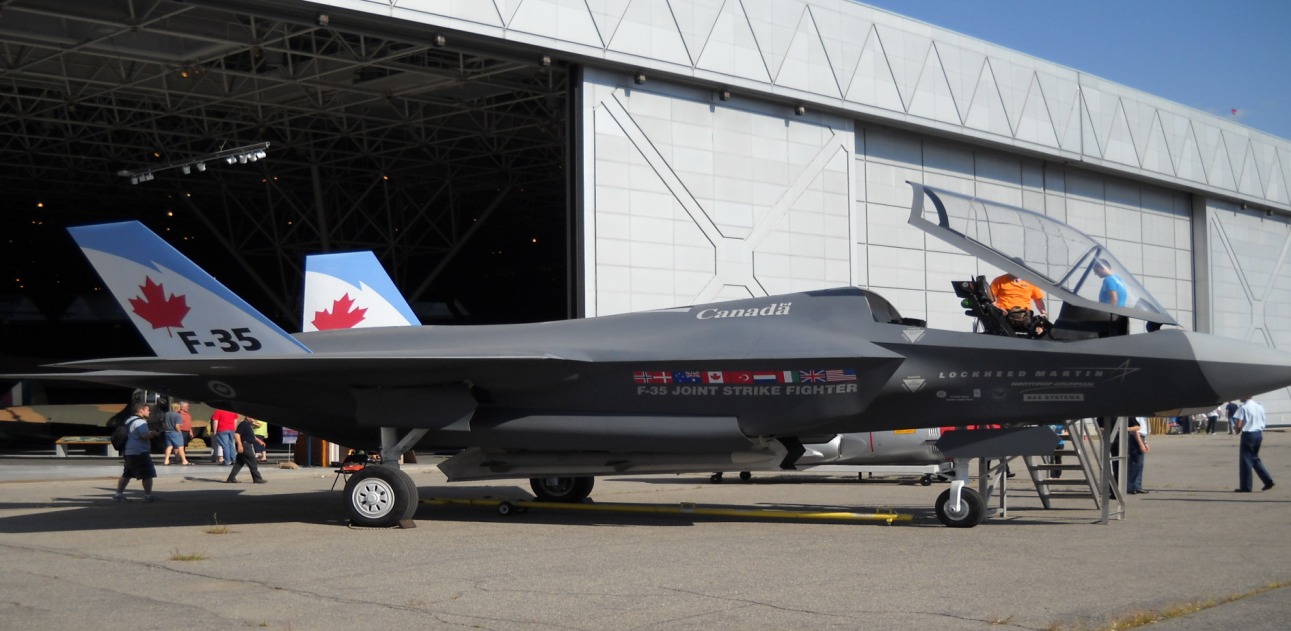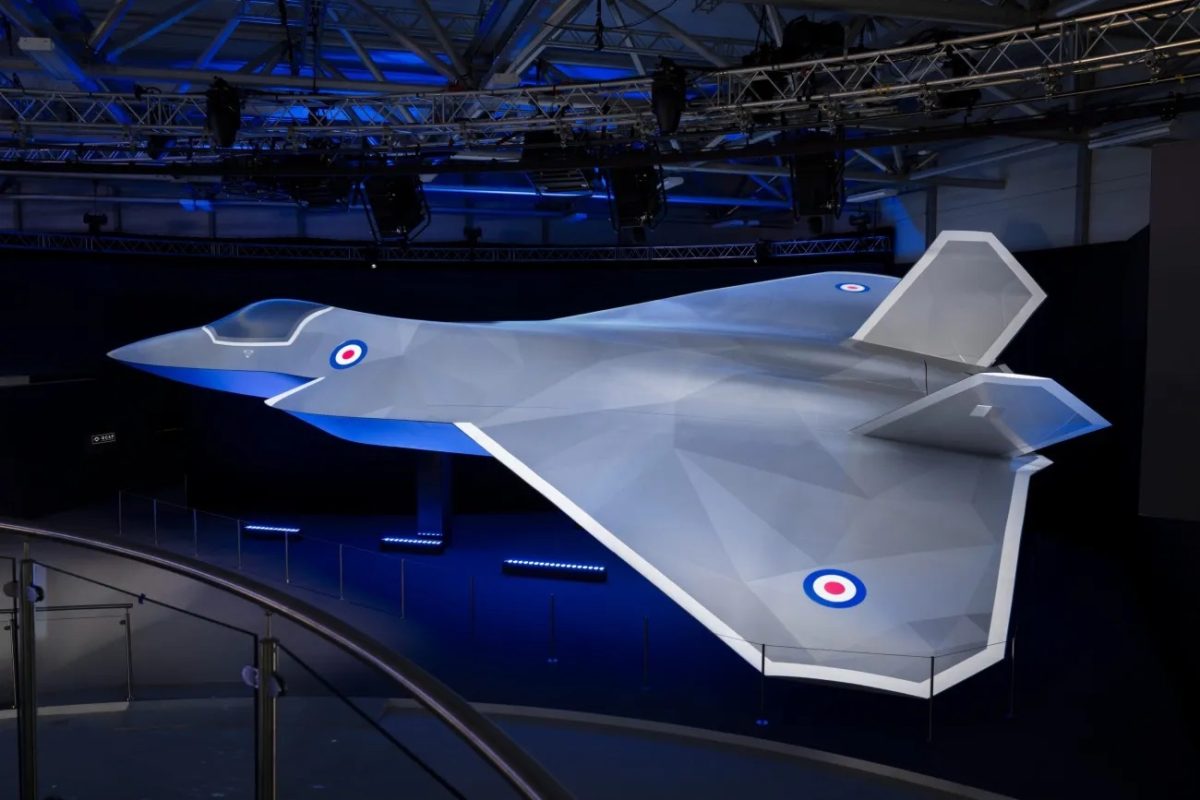As Canada reconsiders its purchase of the American fifth-generation F-35A stealth aircraft in the wake of a prevailing diplomatic storm, the United Kingdom has indicated that it is open to welcoming Canada into the sixth-generation Global Combat Air Program (GCAP).
The Global Combat Air Program is a trilateral partnership between the UK, Japan, and Italy that seeks to design, manufacture, and deliver a next-generation combat aircraft.
British Defense Minister Maria Eagle said that although Canada is currently not a GCAP partner, “all three Global Combat Air Programme nations have highlighted an openness to working with other nations while keeping us on track with the program delivery schedule and helping us deliver future military capabilities.” She was responding to a parliamentary question from Liberal Democrat MP David Chadwick.
Despite not being included in the original group, the report notes that some analysts have stated that Canada would make a natural future partner because of its membership in the Five Eyes intelligence partnership and its strong security links to the United Kingdom.
While the Defense Minister did not mention if an offer had been made to Canada, Maria Eagle’s statement came days after Canadian Prime Minister Mark Carney visited France and the UK amid tensions with Washington. Welcoming the new Canadian PM, the British Prime Minister Keir Starmer said at the time: “The relationship between our two countries has always been strong. Two sovereign allies, so much in common – a shared history, shared values, shared king.”
There are currently three active sixth-generation aircraft programs in the West: the American F-47; the Global Combat Aircraft Program developed jointly by the UK, Japan, and Italy; and the Future Combat Air System (FCAS) jointly developed by France, Germany, and Spain.
The US, for one, is developing the aircraft all by itself. In fact, on the question of exports, US President Donald Trump earlier told reporters that he would “tone down” the sixth-generation F-47 by 10% before exporting it to other countries. “Because someday, maybe they’re not our allies,” he asserted.
Notably, Maria Eagle’s statement comes at a time when Canada is reconsidering its purchase of the US-origin F-35A stealth fighters amid a political fallout with the Trump administration.
Amid the bitter political battle with Washington over tariffs and threats from the American president to make Canada its 51st province, Ottawa is re-examining its ties with the US, including the US$13.29-billion fighter jet contract.
Canada ordered 88 fifth-generation F-35A fighters from the US in 2023. The first tranche of 16 jets, already paid for, is scheduled to arrive in the country early next year.
However, it is now mulling the possibility of nixing the rest of the purchase, owing to fears that Trump could block Canada’s access to software upgrades and hardware parts necessary to keep the aircraft combat-ready, as explained by the EurAsian Times.

The deal has not been scrapped, but the government has asserted that it needs to “make sure that the contract in its current form is in the best interests of Canadians and the Canadian Armed Forces.” The Carney government has also indicated that it could look for a European alternative to meet its fighter jet needs.
Currently, Europe does not have a fifth-generation fighter jet. Instead, it has three different 4.5th-gen fighters: the Rafale, Eurofighter Typhoon, and the Gripen-E/F.
Canada has not expressly stated which aircraft it would be interested in. However, if Ottawa scraps the F-35 acquisition, the prospects of becoming a partner in a sixth-generation aircraft program appear attractive.
Any new participant’s entry into the GCAP program would be subject to approval from all three countries. Earlier, there was speculation that Saudi Arabia was keen on joining the program, but reports hinted that Japan had axed the proposal.
The GCAP Is Progressing
The GCAP alliance was formed in 2022 by the UK, Japan, and Italy to combine their resources and expertise to create a sixth-generation aircraft with advanced technology.
The trilateral organization had previously declared that the aircraft would make its first flight in 2027 and be ready for induction by 2035 – an ambitious timeframe.
The planned combat air system will primarily consist of fighter aircraft and unmanned “adjuncts” such as drones, advanced sensors, and networked data systems powered by cloud computing and artificial intelligence. The crewed sixth-generation fighter jet will be equipped with cutting-edge technology, such as advanced radar and perhaps high-power microwave capabilities. It would be designed for long-range combat.
In July last year, at the Farnborough International Airshow, the three GCAP partner countries unveiled the new concept model of their future combat aircraft. The specific concept model had a wider wingspan than earlier unveiled designs to enhance the aerodynamics of future combat aircraft.
All three members have ratified the GCAP treaty, formally creating the GCAP International Government Organization (GIGO). This organization is charged with overseeing the development of the next-generation fighter jet, establishing capability requirements, and managing the industrial framework.

The GIGO would be headquartered in the UK and headed by a Japanese official. Italy is expected to provide the first leader of the company associated with the GIGO, which will include Leonardo of Italy, Mitsubishi Heavy Industries (MHI) of Japan, and BAE Systems PLC of Britain.
According to the GCAP partners, the aircraft will be among the world’s most advanced, networked, versatile, and interoperable fighter jets. Thanks to its software-driven interactive cockpit, integrated sensor array, intelligent weapons system, and next-generation radar, the next-generation combat aircraft will provide more data, enhancing situational awareness.
The program aims to replace the Eurofighter Typhoon, which is used by the Italian Air Force and the Royal Air Force, and the Mitsubishi F-2, which is used by the Japan Air Self-Defense Force.
The GCAP grouping seeks to acquire an export-oriented first-mover advantage in the sixth-generation combat aircraft market. This may have become easier given that the FCAS is trailing and Trump has set ‘terms and conditions’ for exports.
- Contact the author at sakshi.tiwari9555 (at) gmail.com
- Follow EurAsian Times on Google News




